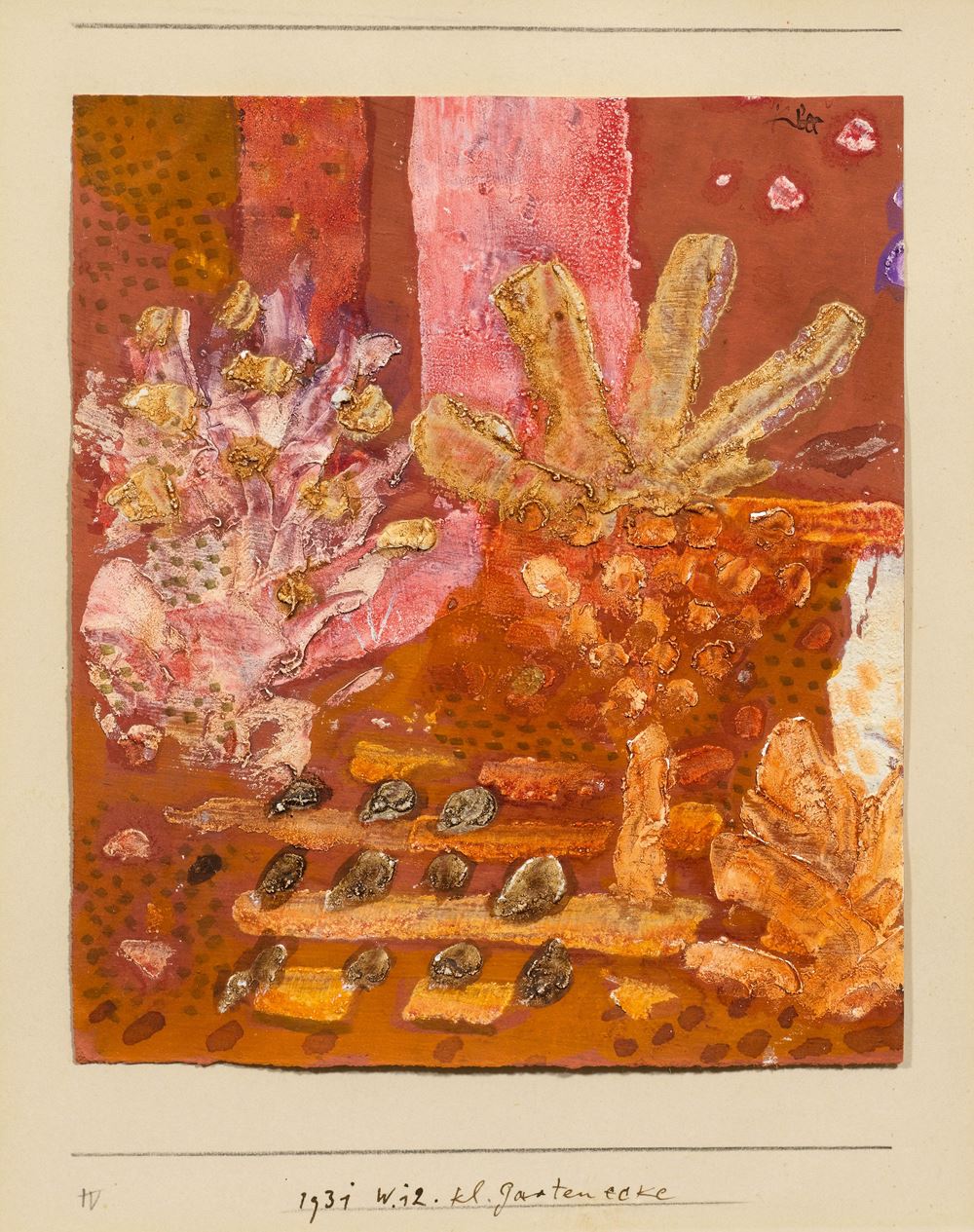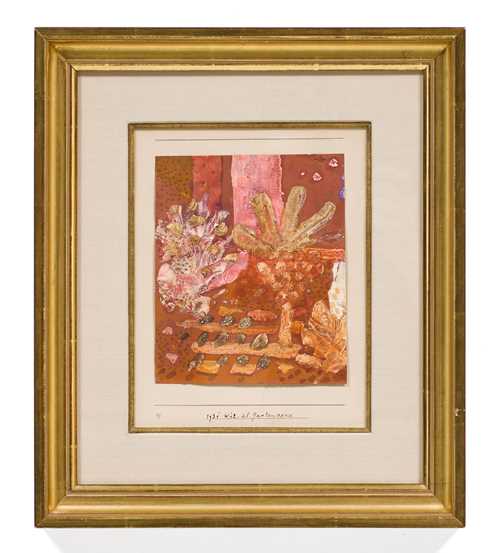
Lotto 3229* - A199 Impressionismo e arte moderna - venerdì, 03. dicembre 2021, 16h00
PAUL KLEE
Dated, inscribed and titled lower centre on the artist's board: 1931. W12. kl. Gartenecke.
- Rudolf Probst, Galerie Neue Kunst Fides/Das Kunsthaus, Dresden/Mannheim, 1932/33.
- Lily Klee collection, Bern, 1940–45.
- Galerie Rosengart, Lucerne, 1945/46.
- Curt Valentin, Buchholz Gallery/Valentin Gallery, Berlin/New York, from 1946.
- Clifford Odets, New York, until 1954.
- Saidenberg Gallery, New York, from 1954 (label on the reverse).
- Galerie Georges Moos, Geneva.
- Swiss private collection, by descent from the above and owned by the family for three generations.
Exhibited:
- Lucerne 1945, Paul Klee zum Gedächtnis, Galerie Rosengart, 15.7.–15.9.1945, no. 26.
- New York 1954, Paul Klee. An Exhibition of Paintings and Drawings commemorating the 75th Anniversary of his Birth, Saidenberg Gallery, 8.3.–26.4.1954, no. 24.
- Geneva 1973, Art du XXe siècle - Collections genevoises, Musée Rath et Cabinet des Estampes, 28.6.–23.9.1973, no. 73 (label on the reverse).
Literature:
Paul-Klee-Stiftung and Kunstmuseum Bern (eds.): Catalogue raisonné Paul Klee, vol. 6 (1913–1918), Bern 2000, p. 148, no. 5657 (with ill.).
From May to August 2008 the Zentrum Paul Klee, in collaboration with the Bergen Art Museum and the Henie Onstad Art Centre, devoted an entire exhibition titled "In Paul Klee’s Enchanted Garden” to the theme of nature in Paul Klee's life and work. Nature-its plants and landscape-are without a doubt a central motif that runs as a common thread from Klee's early work through to his later work.
In addition to Klee's passion for the Swiss landscape, which he would explore with his father on various weekend hikes, his interest in the world of plants and flowers had been fostered from an early age. He worked in the garden himself, planting seeds and bulbs, watering them with his own hands and watching them grow. He collected various types of flowers, which he would dry, study in detail and store in a herbarium. He observed the vegetation and flora in his parents' garden, in the area around Bern with the Aare River, in the parks and gardens of Wörlitz and Weimar, in the botanical gardens abroad and along the more distant coasts of the Mediterranean and the North Sea, all of which served as sources of inspiration.
In 1931 Klee left the Bauhaus to take up a professorship at the art academy in Düsseldorf. He rented a room in Düsseldorf, but kept his apartment in Dessau and commuted back and forth between both studios every two weeks. During those eventful and changing times, nature and art remained a constant for him.
The present work ‘Kleine Gartenecke’ was created in that same year. Klee’s captivating, thick application of coloured paste imparts the small composition with the character of a painting. The work went to the USA in the 1940s through Curt Valentin, one of the most important American dealers of Klee works, and finally returned to Switzerland nearly 10 years later through the Geneva gallerist Georges Moos.
CHF 100 000 / 150 000 | (€ 103 090 / 154 640)
Venduto per CHF 125 000 (incl. premio dell'acquirente)
Non si assume alcuna responsabilità per la correttezza di queste informazioni.


